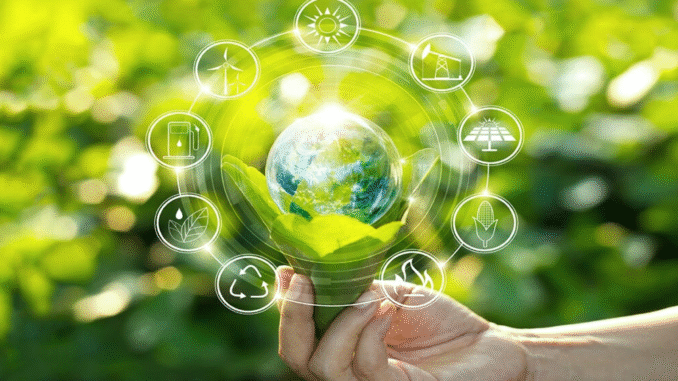
Green Tech: How Technology Is Driving a More Sustainable Future
In the face of climate change, pollution, and resource depletion, sustainability has become more than a buzzword—it’s a necessity. Fortunately, technology is rising to the challenge. From renewable energy and electric vehicles to smart cities and waste-reducing innovations, green technology—also known as clean tech—is paving the way for a more sustainable future.
This article explores how green tech is reshaping industries, empowering consumers, and helping the planet, while also addressing the challenges and opportunities that lie ahead.
What Is Green Technology?
Green technology refers to environmentally friendly innovations that reduce or eliminate negative impacts on the environment. These technologies focus on:
- Energy efficiency
- Renewable energy sources
- Resource conservation
- Waste reduction and recycling
- Sustainable agriculture and transportation
Green tech aims to support long-term ecological balance, making it a crucial component of both corporate and governmental sustainability strategies.
Why Green Technology Matters Now More Than Ever
The urgency to combat climate change and environmental degradation is driving global interest in sustainable solutions. Key challenges include:
- Rising global temperatures
- Increased carbon emissions
- Deforestation and habitat loss
- Water and air pollution
- Waste accumulation
In response, governments are setting net-zero emissions targets, investors are prioritizing ESG (Environmental, Social, and Governance) metrics, and consumers are demanding greener products. Technology is the bridge connecting these goals to actionable solutions.
1. Renewable Energy Technologies
Solar Power
Solar energy has become more affordable and accessible than ever. Innovations in photovoltaic cells, solar roofing, and solar farms are helping reduce reliance on fossil fuels.
- Advancements: Thin-film solar panels, solar shingles, and floating solar arrays.
- Impact: Reduced electricity bills, lower emissions, and energy independence.
Wind Power
Modern wind turbines are more efficient, quieter, and scalable. Offshore wind farms are particularly promising due to stronger and more consistent winds.
- Leaders: Denmark, the UK, and the U.S. are expanding wind capacity rapidly.
- Technology: AI is used to optimize turbine placement and maintenance.
Energy Storage
Renewable sources are intermittent, making energy storage critical. Battery technologies—like lithium-ion, solid-state, and flow batteries—enable grid stability and round-the-clock clean power.
- Tesla’s Powerwall, for example, allows homeowners to store solar energy for nighttime use.
2. Electric and Sustainable Transportation
Transportation is a leading contributor to greenhouse gas emissions. Green tech is transforming the sector with cleaner alternatives.
Electric Vehicles (EVs)
EVs produce zero tailpipe emissions and are powered by electricity—ideally from renewable sources.
- Popular EVs: Tesla, Rivian, Nissan Leaf, and Ford’s Mustang Mach-E.
- Infrastructure: Fast-charging networks are expanding worldwide.
Public Transport Innovations
Cities are adopting electric buses, smart traffic systems, and autonomous shuttles to reduce congestion and pollution.
- Example: Shenzhen, China, has converted its entire bus fleet to electric.
Micromobility
Bikes, e-scooters, and electric skateboards offer eco-friendly alternatives for short-distance travel, easing urban traffic and emissions.
3. Smart Cities and Infrastructure
Smart cities use data and automation to improve urban living while minimizing environmental impact.
Smart Grids
A smart grid monitors and manages energy distribution in real-time, integrating renewable sources and improving efficiency.
- Benefits: Reduces blackouts, balances demand, and lowers energy loss.
Intelligent Lighting
Streetlights with motion sensors and solar power reduce electricity usage and light pollution.
Green Buildings
Modern architecture incorporates:
- Energy-efficient HVAC systems
- Solar panels and green roofs
- Sustainable materials and waste recycling
LEED-certified buildings are becoming the norm for new construction projects.
4. Circular Economy and Waste Reduction
Traditional consumption follows a linear model—produce, use, dispose. Green tech supports a circular economy, where resources are reused, repaired, and recycled.
Recycling Technologies
AI and robotics are improving waste sorting and recycling processes. Some companies use blockchain to track recyclable materials through the supply chain.
- Example: AMP Robotics uses AI to identify and sort recyclables with high precision.
Biodegradable Materials
Bioplastics, mushroom packaging, and seaweed-based alternatives are replacing harmful single-use plastics.
Waste-to-Energy
Innovative technologies convert organic waste into electricity, heat, or fuel. This reduces landfill use and captures otherwise wasted energy.
5. Sustainable Agriculture and Food Tech
Feeding a growing global population sustainably requires smarter agricultural practices.
Precision Agriculture
Drones, IoT sensors, and data analytics help farmers monitor crop health, optimize irrigation, and reduce pesticide use.
Vertical Farming
By growing food indoors in stacked layers, vertical farming saves land and water while reducing transportation emissions.
- Benefits: Year-round harvests, fewer pesticides, and urban availability.
Lab-Grown and Plant-Based Foods
Technologies are creating alternatives to traditional meat, which has a large environmental footprint.
- Popular brands: Beyond Meat, Impossible Foods, and cultured meat startups like Eat Just.
6. Clean Water and Air Solutions
Access to clean water and air is a global issue. Green technology is helping improve quality and availability.
Water Purification
Solar-powered water purification systems, nanofiltration, and atmospheric water generators provide sustainable water solutions, especially in remote or drought-prone areas.
Air Quality Monitoring
Smart sensors track air pollutants in real-time, helping cities respond to pollution spikes.
- Example: IQAir provides air quality data and forecasts via mobile apps.
Carbon Capture and Sequestration
These technologies trap carbon dioxide from industrial processes and store it underground or use it to produce materials like concrete.
7. Green Finance and Carbon Markets
Technology is making environmental responsibility measurable and tradeable.
Carbon Tracking Platforms
Blockchain-based platforms allow companies to measure, verify, and trade carbon credits.
Green Bonds
Financial institutions are investing in environmentally sustainable projects, and tech ensures transparency in how funds are used.
Challenges to Green Tech Adoption
While promising, green technology faces several obstacles:
1. Cost Barriers
Upfront investment for technologies like solar panels or EVs can be high. Incentives and mass adoption are helping bring costs down.
2. Policy and Regulation
Supportive policies are critical. Without government incentives and clear regulations, adoption may lag.
3. Infrastructure Gaps
Charging networks, smart grids, and recycling systems need expansion to support green tech growth.
4. Technological Limitations
Battery life, storage capacity, and material availability are areas still undergoing rapid innovation and improvement.
The Role of Governments, Corporations, and Consumers
Governments
- Implement policies like tax credits and carbon pricing
- Invest in clean infrastructure
- Set emissions reduction targets
Corporations
- Commit to sustainability goals (e.g., Net Zero)
- Adopt ESG frameworks
- Invest in clean technology R&D
Consumers
- Choose sustainable products and services
- Support green companies
- Reduce energy use and waste
Sustainability is a collective effort, and green tech enables all stakeholders to contribute effectively.
Looking Ahead: The Future of Green Technology
The future of green tech is bright, with emerging innovations poised to take sustainability to the next level:
Green Hydrogen
A clean fuel produced using renewable energy and water electrolysis, green hydrogen could decarbonize heavy industries like steel and aviation.
Energy-Positive Buildings
Structures that generate more energy than they consume will become viable through solar advancements and storage.
AI-Driven Environmental Monitoring
Machine learning will help predict climate trends, natural disasters, and environmental risks with unprecedented accuracy.
Decentralized Energy Systems
Homeowners could become energy producers, selling excess power back to the grid via peer-to-peer networks.
Conclusion
Green technology is more than a trend—it’s a vital solution for our planet’s future. From energy and transportation to food, water, and waste, innovation is helping reduce environmental harm while boosting efficiency and economic opportunity.
As individuals, businesses, and governments embrace these technologies, the vision of a cleaner, healthier, and more sustainable world becomes achievable.
The question is no longer if green tech can change the world—but how fast we can scale it.

